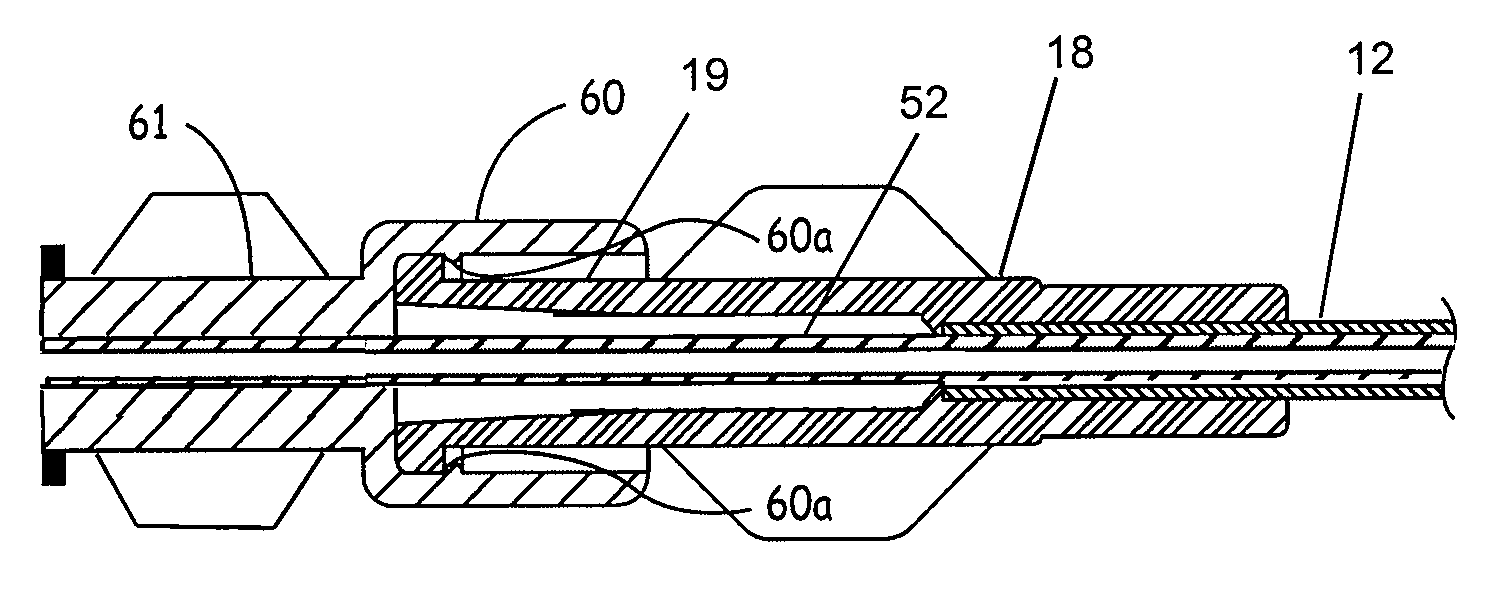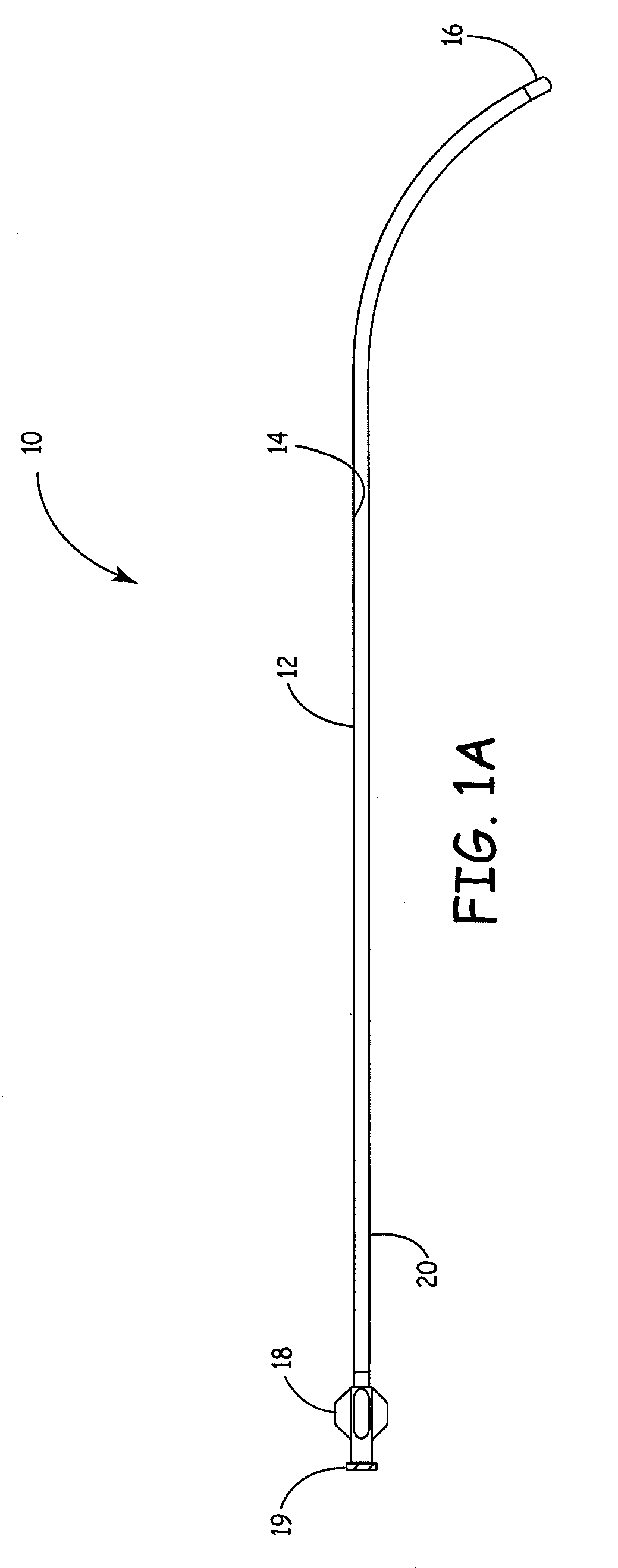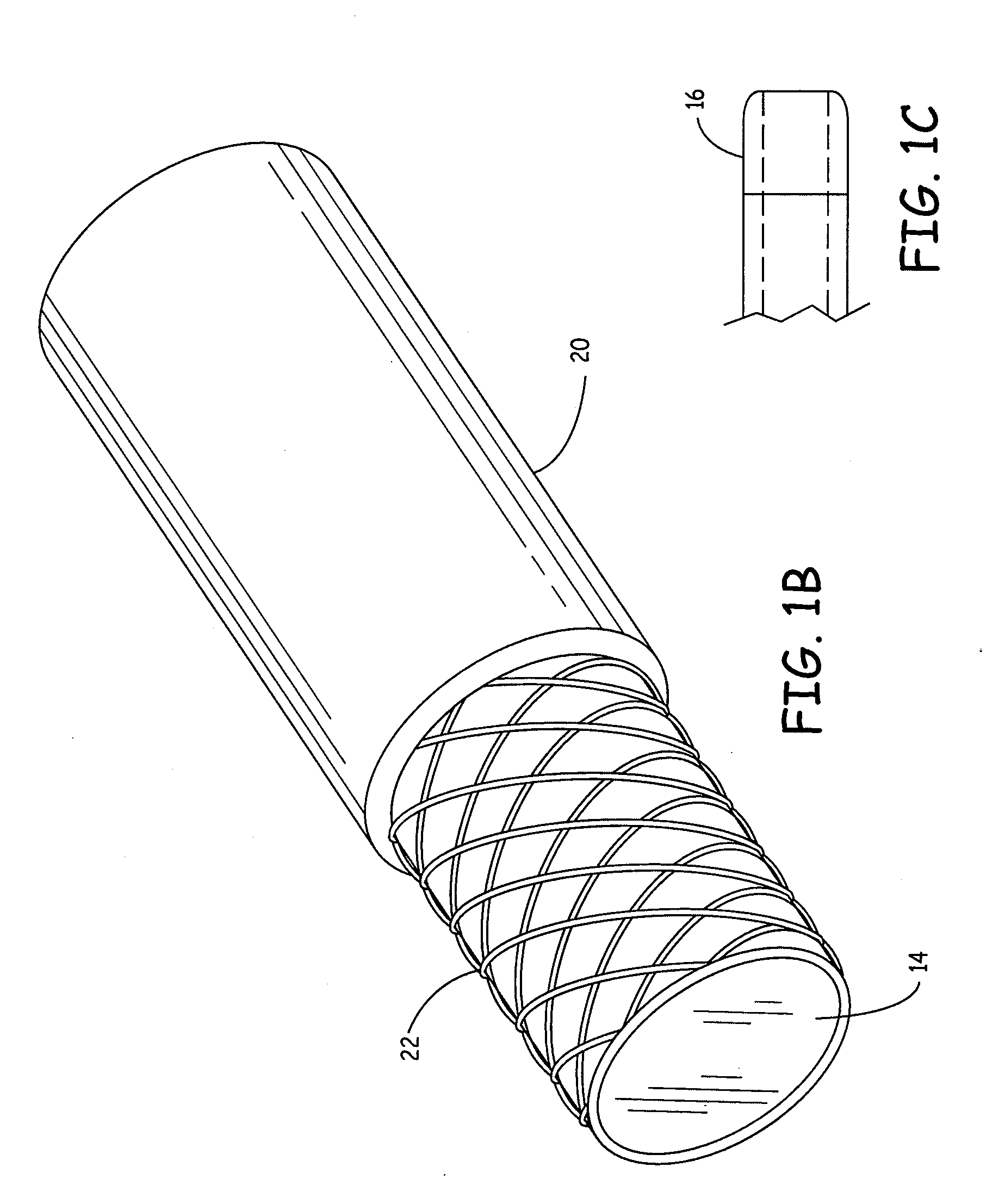System and method for treating septal defects
a septal defect and system technology, applied in the direction of catheters, etc., can solve the problems of difficult introduction and advancement of such devices into vessels, damage or rendered inoperable, and the loading of such devices
- Summary
- Abstract
- Description
- Claims
- Application Information
AI Technical Summary
Benefits of technology
Problems solved by technology
Method used
Image
Examples
Embodiment Construction
[0037]FIG. 1A depicts a guide catheter 10 according to one embodiment of the present invention. The guide catheter 10 has an elongated tubular member 12 having an inner layer 14, a catheter tip 16, a connection element 18 including a male element 19, and an outer layer 20. According to one embodiment, the guide catheter 10 is a sheath guide catheter configured to be used in conjunction with a dilator guide catheter wherein the dilator is inserted into the sheath, as will be described in further detail herein.
[0038]The inner layer 14 according to one embodiment has a thickness of from about 0.0015 inches to about 0.006 inches. The layer 14 further may be a slippery inner surface configured to promote the advancement of any device inserted into the guide catheter 10. According to one embodiment, the layer 14 is any fluoropolymer. For example, according to one embodiment the layer 14 is comprised of PTFE. Alternatively, the layer 14 is comprised of MFA. In a further alternative, the in...
PUM
 Login to View More
Login to View More Abstract
Description
Claims
Application Information
 Login to View More
Login to View More - R&D
- Intellectual Property
- Life Sciences
- Materials
- Tech Scout
- Unparalleled Data Quality
- Higher Quality Content
- 60% Fewer Hallucinations
Browse by: Latest US Patents, China's latest patents, Technical Efficacy Thesaurus, Application Domain, Technology Topic, Popular Technical Reports.
© 2025 PatSnap. All rights reserved.Legal|Privacy policy|Modern Slavery Act Transparency Statement|Sitemap|About US| Contact US: help@patsnap.com



